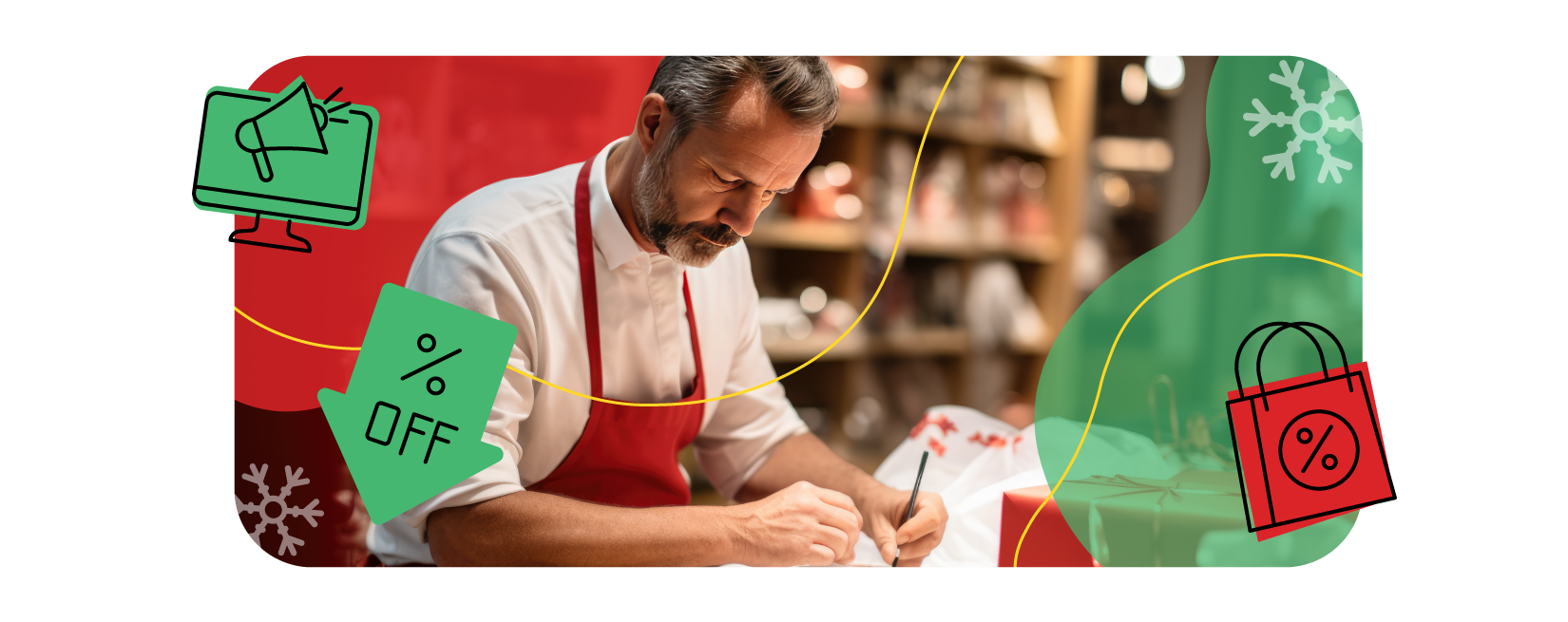With holiday sales projected to grow 3-4% over last year, this season presents a golden opportunity for retailers to capitalize on the expected “record level” increase in consumer spending during November and December. In this post, we’ll share strategies to captivate customers, deliver delightful shopping experiences, and drive more holiday sales for your business. Dive in to discover how you can transform your store into a holiday hotspot.

1. Understand Your Customers
Above all, it’s essential to understand who your customers are during the holiday season. Are they looking for quick, budget-friendly gifts, or are they in search of something unique, unusual, or luxurious? Leverage customer data and reflect on past holiday sales trends to shape promotions and product selections that truly speak to your audience’s needs and preferences.
2. Diversify In-Store Promotions
When it comes to in-store holiday promotions, think beyond the discount sign. By varying your in-store promotions, you offer a more enticing experience for customers. Here few examples:
- A “12 Days of Christmas” event, where a new deal is unveiled each day
- Bundled deals that combine products for a more attractive price
- Early bird specials and last-minute deals
Additionally, if you don’t already have one in place, the higher-traffic holiday season is an opportune time to implement a loyalty program, where frequent shoppers earn points or receive special discounts, adding an incentive for repeat visits.

3. Craft a Festive Shopping Environment
Transform your store into a festive destination with simple touches like holiday decorations, seasonal music, and themed displays. Consider the use of inviting scents like pine or cinnamon to enrich the ambiance and evoke a cozy sense of warmth for shoppers. A gift-wrapping station or a holiday selfie corner are some other experience enhancers.
4. Personalize Customer Service
In today’s digital age, the personal touch offered by brick-and-mortar stores can be a significant advantage. Train your staff to provide thoughtful service, such as personalized gift suggestions or efficient checkout processes. 5. Run Social Media Challenges and Contests

5. Run Social Media Challenges and Contests
Leverage the power of social media to create a buzz around your store with engaging challenges and contests. These fun activities increase engagement and can attractcustomers to your store. Plus, it’s a great way to build a stronger online community around your brand. Here are some ideas to consider:
- Host Interactive In-Store Challenges: Design challenges that require participants to visit your store. For instance, a ‘holiday treasure hunt’ where customers look for hidden symbols or items around your store. Publicize these challenges on Instagram and Facebook to reach a wider audience.
- Create Exclusive Social Media Offers: Announce special offers and discounts that are only available to your social media followers. This could be a secret password or phrase they mention at the checkout to access an exclusive discount.
- Photo Contest with In-Store Displays: Encourage customers to take creative photos with your holiday-themed store displays and share them on social media using your campaign hashtag. Offer prizes for the most creative, funny, or festive photos. This not only drives foot traffic but also provides free promotion through customers’ social networks.
- Engage with User-Generated Content: Actively engage with users who participate in your social media challenges. Reposting their content on your store’s social media pages shows appreciation for their effort while inspiring others to take part.
6. Cross Promotions
Team up with nearby businesses for cross-promotions. For instance, if a customer makes a purchase at a neighboring café, they could receive a discount voucher for your store, and vice versa. This helps to increase foot traffic and benefits both businesses.
Wrapping Up
Now that you are primed for holiday success, it’s time to put these strategies into play. But before you go, there’s one more important piece to maximizing profit during the holidays: payment processing.
While credit card processing fees can diminish hard-earned holiday revenue, Paynada offers a solution that enables businesses to realize more profit from every transaction, leading to a merrier bottom line.
Find out more HERE




